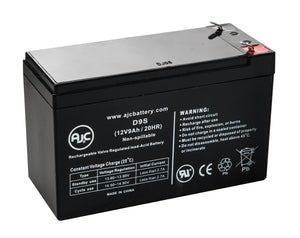Orders over $129

How to Charge Your Cell Phone Battery Correctly
Although cell phone batteries and battery life have improved greatly over the last ten years, the panic of being faced with a fading phone battery is still often an unfortunate part of everyday life. All batteries will have a certain lifespan, and once this has peaked, the only real and permanent fix is to buy a replacement.
Many smartphone battery manufacturers state that their devices have a life of only 300–500 cycles. After this point, cell phone batteries struggle to hold as much electricity as before and will end up powering your device for ever shorter time periods.
Fear not, though, as we have put together a list of our expert tips on how to extend your battery’s lifespan for use with a cell phone.
Battery Memory Effect
Unsure whether you should let your cell phone battery run out completely before recharging to 100%? This debate is related to something described as the battery ‘memory effect’, which is when batteries ‘remember’ how much remaining charge is left. For example, if you frequently charge your phone from 20% to 80%, your battery may ‘forget’ about the leftover 40% that is uncharged.
It’s important to bear in mind that this is only the case for older cell phone batteries that are nickel-based and not the newer lithium-ion batteries that are more common today. When charging these latter batteries, you need to do the opposite.
Fully Charging Cell Phone Batteries
When it comes to lithium-ion batteries, the general rule is to keep them charged to 50% or more for as much of the time as possible. If the percentage drops below 50%, it’s important to try and top it up as much as you can. Be warned, though: don’t charge it all the way to 100%. Although a full recharge doesn’t cause irreversible damage, doing this on a regular basis can shorten your battery’s lifespan.
Cell Phone Charging Recommendations
Manufacturers recommend that you should aim to charge your lithium-ion battery from 40% to 80% and try not to let your battery to drop below 20%. If you do feel the need to do a full recharge from 0% to 100%, try to do this no more than once a month.
Most modern smartphones and chargers also recognize when your device is fully charged and no longer needs to be plugged in, so leaving your phone on charge overnight isn’t a huge problem. One point to be aware of is overheating, though, especially when your phone is kept in a case. The best practice is to take the phone out of its case before charging for long periods.
Which Cell Phone Chargers Are Best?
If possible, try to continue using the charger that came with your cell phone when you bought it. If this breaks, try to purchase an appropriate charger from an approved third-party supplier, as cheap alternatives can often do more harm than good.
Many Android phones now offer fast charging too. Although this a great and convenient option, as with the overnight charging recommendations, it’s important to be aware that increased voltage also brings increased heat and a hot battery can reduce battery lifespan over time.
Find out more information on cell phone and PDA batteries and browse our online stock today.


